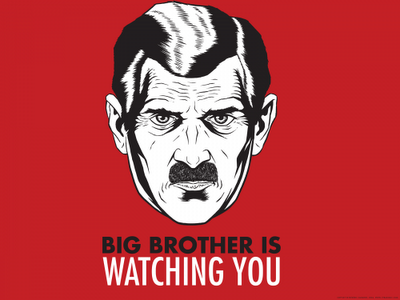Editor’s Note:
This essay was written in 2000 and published online at a long-defunct website. It is really a sketch of a more detailed research project that somebody else might wish to carry out. Even as such, I think it deserves a new lease on life. I do not regret a single hour spent reading Ortega.
“The apparent egoism of great nations and of great men is the inevitable sternness with which anyone who has his life fixed on some undertaking must bear himself. When we are really going to do something and have dedicated ourselves to a purpose, we cannot be expected to be ready at hand to look after every passer-by and to lend ourselves to every chance display of altruism.”—Ortega y Gasset, The Revolt of the Masses
Though today almost forgotten, José Ortega y Gasset (1883–1955) is Spain’s greatest philosopher and was one of the 20th century’s most prominent public intellectuals. Historians of philosophy usually place Ortega in the traditions of phenomenology, existentialism, and “Lebensphilosophie” (life-philosophy), and they are right. His greatest philosophical debts are to Nietzsche and Wilhelm Dilthey. His philosophical interests focused on the relationship of human life to history, culture, and the moral life. Ortega was an individualist and an advocate of liberal democracy. He was also an unabashed elitist who held an “aristocratic” theory of history and culture and thus deplored both capitalism and communism as forms of “mass” society, which are destructive of culture and individuality.
Although he was committed to a lofty view of philosophy as a way of life and held an academic position in Spain, Ortega was the antithesis of the ivory tower intellectual. He had journalism in his blood. He claimed that he was “born on a rotary press.” His father was a prominent novelist and journalist; his mother’s family owned a prominent liberal newspaper, El Imparciel. Writing for El Imparciel and other periodicals, Ortega developed the ability to make deep and rigorous thoughts accessible in a lucid, elegant, and colorful literary style. He also took part in founding three important institutions: La Escuela Superior del Magisterio in Madrid, which exercised great influence on Spanish higher education; Calpe publishers, one of Spain’s most important intellectual publishers; and the monthly journal Revista de Occidente, which became one of Europe’s most prestigious journals of ideas—all while turning out a steady stream of philosophical books and essays.
In the 1930s, translations of Ortega’s books The Dehumanization of Art and The Revolt of the Masses made him famous around the world. In 1931, after the fall of the monarchy and the Right-wing dictatorship of Primo de Rivera, the Second Spanish Republic was declared. Ortega was elected to the new congress. Tiring quickly of politics, he withdrew from public life the following year. In 1936, the Spanish Civil War erupted, and Ortega became an exile in France, Portugal, and Argentina. He visited Spain in 1945 and 1946, and returned in 1948, dying there of cancer in 1955. In his last decades, he traveled widely, lecturing in Germany, Argentina, and the United States.
Ortega had almost no impact on academic philosophy in the United States, but he enjoyed a wide lay readership—including the young Ayn Rand. In 1932, his The Revolt of the Masses was a best-seller. Other important titles include History as a System (the title essay of which is the clearest statement of Existentialism ever written), Man and People (on the nature of individuality and social life), The Mission of the University (on liberal education), The Modern Theme and Man and Crisis (on the nature of modernity), The Origin of Philosophy and What is Philosophy? (the titles are self-explanatory), Historical Reason and An Interpretation of Universal History (on the philosophy of history), and Meditations on Quixote and Phenomenology and Art (on art and literature). Ortega’s books were published primarily by Norton and other trade publishers, not by academic presses, and a number of titles remain in print to this day. In 1949, his inaugural address to the Goethe Festival in Aspen was covered by Time, Atlantic Monthly, and the New York Times. In 1952, he was declared one of the 100 most important people in the contemporary world.
I wish to briefly consider three aspects of the relationship of Rand and Ortega. First, I will examine Rand’s 1934 notes on The Revolt of the Masses. Second, I will suggest that Revolt may have planted some of the seeds of Atlas Shrugged. Third, I will follow up on suggestion of Louis Torres and Michelle Marder Kamhi that Ortega’s 1957 book On Love may have influenced Rand’s concept of “sense of life.”
My aim is to throw light on the development of Ayn Rand’s thought. This is not the forum or format for mounting a full-scale defense of my thesis, but I will be content simply to encourage more people to read Ortega’s work.
The Noble and the Base
Ortega upholds a “radically aristocratic interpretation of history.” He does not argue that society ought to be aristocratic, nor is he an apologist for actual aristocracies. Instead, he claims that “human society is always . . . aristocratic by its very essence, to the extreme that it is a society in the measure that it is aristocratic, and ceases to be such when it ceases to be aristocratic” (Revolt, 20). All societies are “aristocratic” insofar as their existence depends upon small elites of superior individuals. This superiority exists along a number of dimensions.
In modern technological society, the most apparent distinction between elite and masses is drawn in terms of technological expertise. As technology advances, the very existence of more and more people comes to depend upon technologies which can be understood by a smaller and smaller percentage of the population.
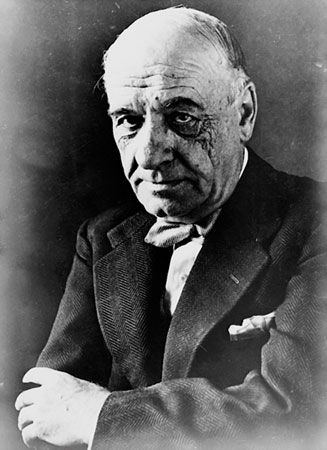 Ortega clearly appreciates the value of modern technology and admires the skills of those who develop and apply it. But he does not think that technocrats constitute a true elite. In fact, he tends to regard them merely as mass men with high IQs—clever barbarians, indispensable barbarians, but barbarians nonetheless. Ortega also thought that the progress of industrialism and technology would bring about the worst form of mass society: a global and homogeneous mass society.
Ortega clearly appreciates the value of modern technology and admires the skills of those who develop and apply it. But he does not think that technocrats constitute a true elite. In fact, he tends to regard them merely as mass men with high IQs—clever barbarians, indispensable barbarians, but barbarians nonetheless. Ortega also thought that the progress of industrialism and technology would bring about the worst form of mass society: a global and homogeneous mass society.
Technicians are not the highest type of man, because there is something higher than technical knowledge: the wisdom needed to use technique rightly. “We live at a time when man believes himself fabulously capable of creation, but he does not know what to create. Lord of all things, he is not lord of himself.” Modern technical man is in the same situation as the young Louis XV: “He had all the talents except the talent to make use of them” (Revolt, 44).
But how does one acquire wisdom? Here Ortega reveals his debts to the ancient Greeks. His answer has three aspects. First is liberal education, which is comprehensive rather than specialized and focuses upon moral rather than technical issues. Second is apprenticeship in living traditions of practical reason and moral judgment, such as jurisprudence, statecraft, and all-round good judgment. Third is a spiritual attitude: the openness of the soul toward ideals that transcend it and a restless, erotic drive to pursue them.
Ortega calls this spiritual orientation “nobility.” It is primarily discussed in chapter seven, “Noble Life and Common Life, or Effort and Inertia”:
The select man, the excellent man is urged, by interior necessity, to appeal from himself to some standard beyond himself, superior to himself, whose service he freely accepts. . . . we distinguished the excellent man from the common man by saying that the former is the one who makes great demands upon himself, and the latter the one who makes no demands upon himself, but contents himself with what he is, and is delighted with himself. . . . it is the man of excellence who lives in essential servitude. Life has no savour for him unless he makes it consist in service to something transcendental. Hence he does not look upon the necessity of serving as an oppression. When, by chance, such necessity is lacking, he grows restless and invents some new standard, more difficult, more exigent, with which to coerce himself. This is life lived as a discipline—the noble life. Nobility is defined by the demands it makes on us—by obligations, not by rights. Noblesse oblige. “To live as one likes is plebeian; the noble man aspires to order and law” (Goethe). (Revolt, 63)
For me . . . nobility is synonymous with a life of effort, ever set on excelling itself, in passing beyond what one is to what one sets up as a duty and an obligation. In this way the noble life stands opposed to the common or inert life, which reclines statically upon itself, condemned to perpetual immobility, unless an external force compels it to come outside itself. Hence we apply the terms mass to this kind of man—not so much because of his multitude as because of his inertia. (Revolt, 65)
Ortega is essentially restating Nietzsche’s contrast between the “overman”—the man oriented to constant self-surpassing—and the “last man,” who is characterized by complacency, contentment, and inertia. The noble soul—a soul open to and oriented toward ideals—is the essential characteristic of the true aristocrat. By contrast, mass man is characterized by a soul that is “closed” to anything lofty and ideal. He does not guide his actions by looking up (to the ideal), but by looking down (to appetite or expediency) and to the side (to the opinions of his fellow mass men). Because the noble man orients himself by ideals, he is perpetually dissatisfied with himself and strives unceasingly for perfection. Because mass man orients himself by appetite, expediency, and opinion, he is characterized by smugness and contentment. Noble man’s orientation toward ideals that transcend the present gives him an external perspective on the present. This grants him a measure of intellectual liberty: relative freedom from prejudice, opinion, and convention. He has the courage to think for himself. Mass man, by contrast, has no critical distance from the present. Hence he tends toward relativism, jingoism, conventionality, and conformity. Following Nietzsche, Ortega holds that human vitality requires striving for transcendent goals. Noble man, therefore, is truly alive, while mass man is decadent and devitalized.
Rand’s Reaction to Ortega
In an entry in her first philosophical journal dated May 15, 1934, Ayn Rand discusses the first of the passages on nobility quoted above:
In regard to The Revolt of the Masses: Isn’t it a terrible generalization—that can be interpreted in too many different ways—to say that a “noble” man strives to serve and obey, and the “mass” man to do as he pleases?
If what is meant is the noble man’s servitude to his own standards and ideas—is that to be called servitude? If the standards are his, isn’t he doing precisely what he pleases? No truly noble man is going to obey standards set for him by someone else. That is the action of the mass man. It is the mass man who cannot do as he wishes, because he has no wishes; he has to have his standards—or the nearest to that word that he can come—dictated to him. (Journals of Ayn Rand, 70)
This looks like a critique, but in fairness to Ortega, it should be noted that Rand agrees with the substance of his thought and is quarreling only with his expression of it. When Ortega speaks of the noble man’s service and obedience, he is talking about serving and obeying the ideals and values he has chosen for himself. So at bottom he is merely obeying himself. When Ortega characterizes the mass man as doing what he pleases, he means following appetite, expediency, and public opinion. Rand’s “critique” consists merely in pointing out that, in a different sense of the term, the noble man “does what he pleases” and the mass man does not. In a different sense of the term, the mass man is “servile” and the noble man is not. In fairness to Rand, however, this kind of wordplay is very common in journals, where one “thinks out loud” and turns ideas over in one’s mind to assimilate them.
Evidence that Rand did assimilate some of Ortega’s ideas can be found in Rand’s journal entry for the very next day.
Ortega, Rand, and the Crisis of Liberal Democracy
In The Revolt of the Masses, Ortega claims that the rise of mass man is a product of three factors which came together in the 19th century: “liberal democracy, scientific experiment, and industrialism. The two latter may be summed up in one word: technicism” (Revolt, 56). Like Rand, Ortega was a great admirer of the 19th century. Yet, like Rand, he thought that it contained the means of its own destruction:
. . . by submitting the seed of humanity to the treatment of two principles, liberal democracy and technical knowledge, in a single century the species in Europe has been triplicated [from 180 to 460 million].
Such an overwhelming fact forces us, unless we prefer not to use our reason, to draw these conclusions: first, that liberal democracy based on technical knowledge is the highest type of public life hitherto known; secondly, that that type may not be the best imaginable, but the one we imagine as superior to it must preserve the essence of those two principles, and thirdly, that to return to any forms of existence inferior to that of the XIXth Century is suicidal.
Once we recognise this . . . we must then rise up against the XIXth Century. If it is evident that there was in it something extraordinary and incomparable, it is not less so that it must have suffered from certain radical vices, certain constitutional defects, when it brought into being a caste of men—the mass man in revolt—who are placing in imminent danger those very principles to which they owe their existence. (Revolt, 52)
One principle to which the masses owe their existence is limited government. Ortega claims that limited government arises from the pagan aristocratic virtues of magnanimity, generosity, and honorableness in dealing with one’s political opponents:
The political doctrine which has represented the loftiest endeavour towards common life is liberal democracy. . . . Liberalism is that principle of political rights, according to which the public authority, in spite of being all powerful, limits itself. . . . Liberalism—it is well to recall this today—is the supreme form of generosity; it is the right which the majority concedes to minorities and hence it is the noblest cry that has ever resounded on this planet. (Revolt, 76)
Unfortunately for liberalism, these virtues are in short supply among the masses.
Like all classical liberals, Ortega regarded government as merely a means for coordinating independent human activities. Mass man, however, resents the activity, independence, self-restraint, personal responsibility, and risk-taking required by liberalism. Thus he demands that the state be more active so that he can be more passive. This sets in motion a tragic process of inversion, which Ortega discusses in Revolt chapter 13, “The Greatest Danger, the State”:
Is the paradoxical, tragic process of Statism now revealed? Society, that it may live better, creates the State as an instrument. Then the state gets the upper hand and society has to live for the State. . . . This is what State intervention leads to: the people are converted into fuel to feed the mere machine which is the State. The skeleton eats up the flesh around it. The scaffolding becomes the owner and tenant of the house. (Revolt, 122)
Ortega believed that the magnificent machinery of 19th century liberalism and capitalism was ultimately undermined by its moral code, and when this code itself collapsed, European civilization succumbed to nihilism. In the last chapter of Revolt, Ortega writes:
This is the question: Europe has been left without a moral code. It is not that the mass-man has thrown over an antiquated one in exchange for a new one, but that at the centre of his scheme of life there is precisely the aspiration to live without conforming to any moral code. (Revolt, 187)
Europe is now reaping the painful results of her spiritual conduct. She has adopted blindly a culture which is magnificent, but which has no roots. (Revolt, 189)
Although Ortega is cagey about naming the source of this nihilism, here too he is a follower of Nietzsche. The problem is Christianity, the very first revolt of the masses—the metaphysical and moral revolt which made possible the social and political revolt, including the nihilistic negation of Christianity itself. The solution, then, is a new moral code, which somehow weds pagan Greece’s aristocratic and vital ethic of self-actualization to 19th-century liberalism.
The Fountainhead of The Fountainhead?
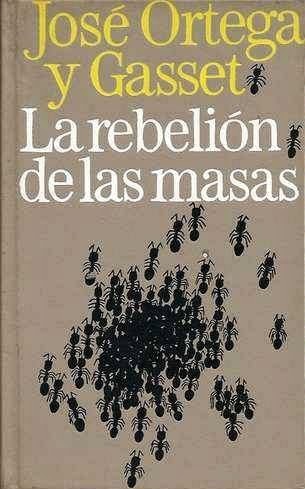 Ayn Rand’s philosophical journal for May 16, 1934, begins with a passage by the American journalist Alexander Wolcott contrasting the cultural atmosphere of the Soviet Union with the West. It closes with a passage copied out from the last chapter of The Revolt of the Masses. Between them, Rand wrote two remarkable paragraphs:
Ayn Rand’s philosophical journal for May 16, 1934, begins with a passage by the American journalist Alexander Wolcott contrasting the cultural atmosphere of the Soviet Union with the West. It closes with a passage copied out from the last chapter of The Revolt of the Masses. Between them, Rand wrote two remarkable paragraphs:
The new conception of the State that I want to defend is the State as a means, not an end; a means for the convenience of the higher type of man. The State as the only organization. Within it-all have to remain individuals. The State, not as a slave of the great numbers, but precisely the contrary, as the individual’s defense against great numbers. To free man from the tyranny of numbers. (Journals, 73–74)
This passage reflects Ortega’s ideas and even his language. Rand takes up Ortega’s contrast between the state as means and the state as end. Rand even follows his penchant for capitalizing the word “State.” (This distinction was not, of course, invented by Ortega. But the fact that Rand uses it alongside a passage from Revolt is good evidence that Ortega was her point of departure.) Rand then develops this initial distinction in terms of Ortega’s distinction between the masses and the elite—“the great numbers” and “the higher type of man.” Ortega would, furthermore, agree that the proper aim of the state is to free men from one another, allowing extraordinary individuals to pursue excellence.
Rand’s second paragraph develops this theme:
The fault of liberal democracies: giving full rights to quantity (majorities), they forget the rights of quality, which are much higher rights. Prove that differences of quality not only do exist inexorably, but also should exist. The next step—democracy of superiors only. This is not possible without a very high and very powerful sense of honor. This, in turn, is not possible without a set of values from which this honor is to be derived. The new set of values: supreme egoism. (Journals, 74)
This paragraph also reflects Ortega’s ideas and language. Like Ortega, Rand is concerned with the crisis of “liberal democracy.” Like Ortega, Rand sees this crisis as the rise of the masses. Like Ortega, Rand describes this as a conflict between the rights of “quality” and “quantity” (cf. Revolt, 13–14). Like Ortega, Rand thinks that the survival of liberal democracy depends upon rule by the best. Rule by the best is liable, however, to degenerate into illiberalism unless the rulers have a “very high and very powerful sense of honor.” Like Ortega, Rand thinks that this sense of honor requires a new moral code radically different from Christianity and its secular offshoots.
It is interesting that the journal entries where Rand discusses Ortega contain her first known discussions of the necessity of creating a new, egoistic moral code for liberal democracy—a system she would later call capitalism. On December 4, 1935, Rand began writing notes for The Fountainhead. In these notes, she makes it clear that her aim is precisely to create such a moral code. Consider, for example, this passage from the notes of December 22, 1935:
If all of life has been brought down to flattering the mob, if those who can please the mob are the only ones to succeed—why should anyone feel any high aspirations and cherish any ideals? The capitalistic world is low, unprincipled, and corrupt. But how can it have any incentive toward principles if its ideology has killed the only source of principles—man’s “I”? Christianity has succeeded in eliminating “self” from the world of ethics, by declaring “ethics” and “self” as incompatible. But that self cannot be killed. It has only degenerated into the ugly modern struggle for material success at the cost of all higher values, since these values have been outlawed by the church. . . . Until man’s “self” regains its proper position, life will be what it is now: flat, gray, empty, lacking in all beauty, all fire, all enthusiasm, all meaning, all creative urge. That is the ultimate theme of the book—Howard Roark as the remedy for all modern ills. (Journals, 84)
While it would be a mistake to reduce Ayn Rand to a Frankenstein monster, patched together from the disjecta membra of the philosophical tradition, it would be equally erroneous to reject the possibility that she was influenced by other thinkers. Even the most original and singular philosopher develops in dialogue with the world and other philosophers. It is seldom possible to make an airtight case for intellectual influence, but if Rand first conceived the moral project of The Fountainhead—and all of her subsequent works—while writing her journal entries for May 15 and 16, 1934, she did so in dialogue with Ortega.
The Atlas Behind Atlas Shrugged?
Clear proof that Ortega’s impression on Rand was powerful enough to last more than a decade is found in her notes for Atlas Shrugged dated April 10th, 1946. In a list of “Characters needed,” Rand first sketches Hugh Akston, the philosophical mentor of John Galt:
The philosopher. A kind of Ortega y Gasset—vaguely. A kind of Aristotle if he came back to life today. Or even Thomas Aquinas. (Journals, 405)
The use of the word “vaguely” in this passage probably indicates some hesitation on Rand’s part. At this point in her development, Rand was moving away from such Continental influences as Nietzsche and Ortega toward Aristotle and Aquinas. This is borne out by the fully-developed character of Hugh Akston, who teaches such Aristotelian principles as “Everything is something” and “By the essence and nature of existence, contradictions cannot exist.” It may, however, be the case that Ortega’s distinguished and aristocratic persona influenced Rand’s characterization of Akston the man. But Ortega was far too suave to be imagined running a diner.
There is another connection between Ortega and Atlas Shrugged, this one far more important to the book’s central theme. Throughout The Revolt of the Masses, Ortega stresses the tendency of mass man to ignorantly undermine the conditions of his very existence:
. . . the common man, finding himself in a world so excellent, technically and socially, believes that it has been produced by nature, and never thinks of the personal efforts of highly-endowed individuals which the creation of this new world presupposed. Still less will he admit the notion that all these facilities still require the support of certain difficult human virtues, the least failure of which would cause the rapid disappearance of the whole magnificent edifice. (Revolt, 58)
My thesis, therefore, is this: the very perfection with which the XIXth Century gave an organisation to certain orders of existence has caused the masses benefited thereby to consider it, not as an organised, but as a natural system. Thus is explained and defined the absurd state of mind revealed by these masses; they are only concerned with their own well-being, and at the same time they remain alien to the cause of that well-being. As they do not see, behind the benefits of civilisation, marvels of invention and construction which can only be maintained by great effort and foresight, they imagine that their role is limited to demanding these benefits peremptorily, as if they were natural rights. In the disturbances cause by scarcity of food, the mob goes in search of bread, and the means it employs is generally to wreck the bakeries. This may serve as a symbol of the attitude adopted, on a greater and more complicated scale, by the masses of to-day towards the civilisation by which they are supported. (Revolt, 59–60)
If one wished to offer concrete illustrations of these principles—the dependence of modern civilization upon the moral virtues and technical expertise of small elites, the failure of the masses and their political leaders to appreciate this fact, the grotesque injustice of the masses oppressing the elites who make their lives possible, and the destruction that would result if the elites simply . . . disappeared—could one do any better than Atlas Shrugged?
Rand, Ortega, and “Sense of Life”
There is conclusive evidence that Ayn Rand read The Revolt of the Masses because she quotes it in her philosophical journals for May 15 and 16, 1934, and there is good reason to think that Ortega influenced key ideas expressed in The Fountainhead and Atlas Shrugged. The publicly available materials do not, however, offer conclusive evidence that Rand read any other works by Ortega.
Nevertheless, a circumstantial case can be made, based on doctrinal comparisons, for the thesis that Ayn Rand’s concept of “sense of life” was influenced by Ortega, specifically his book The Modern Theme, published in America 1933 and his essay “The Role of Choice in Love,” published in English in 1957 in the volume On Love: Aspects of a Single Theme.
I am not the first person to suggest that Rand’s concept of sense of life is indebted to Ortega. In 1991 and 1992, Louis Torres and Michelle Marder Kamhi published a series of essays in Aristos entitled “Ayn Rand’s Philosophy of Art: A Critical Introduction.” In a note, Torres and Kamhi call attention to Ortega’s On Love. (They credit Peter Saint-Andre for calling the passage to their attention.)
The phrase “sense of life” (sentimiento de la vida) is not uncommon in Spanish literature and philosophy. Indeed, the most famous work of Spanish philosophy after Revolt is Miguel de Unamuno’s The Tragic Sense of Life (Del Sentimiento Tragico de la Vida), which has been in print in English since its first translation in 1921. (Rand appends the following P.S. to a letter to Frank Lloyd Wright dated October 10, 1946: “No, I have not read The Tragic Sense of Life by Unamuno, but I shall get it and read it” [The Letters of Ayn Rand, 118]. Unamuno and Rand is a topic for another essay.)
Rand on Sense of Life
In her essay “Philosophy and Sense of Life” (reprinted in The Romantic Manifesto), Ayn Rand places both philosophy and sense of life in the genus of world views, comprehensive accounts of reality. A sense of life is a largely subconscious, implicit, and unarticulated world view, whereas a philosophy is a conscious, explicit, and articulated world view. Rand’s fullest definition of sense of life characterizes it as “a pre-conceptual equivalent of metaphysics, an emotional, subconsciously integrated appraisal of man and of existence. It sets the nature of a man’s emotional responses and the essence of his character” (Romantic Manifesto, 25).
There is an evaluative dimension to a sense of life: “The key concept, in the formation of a sense of life, is the term ‘important.’ It is a concept that belongs to the realm of values, since it implies an answer to the question: Important—to whom?” Rand claims that the concept of importance does not pertain to specifically moral values, but to something more fundamental: “It pertains to that aspect of metaphysics which serves as a bridge between metaphysics and ethics: to a fundamental view of man’s nature” which serves as “the base of ethics.”
Rand describes a sense of life as an “emotional” world view, whereas a philosophy is a “conceptual” world view. She claims that “a sense of life is formed by a process of emotional generalization which may be described as a subconscious counterpart of a process of abstraction. . . . But it is a process of emotional abstraction: it consists of classifying things according to the emotions they invoke.” By contrast, a philosophy is formed by a conscious process of abstraction. (It is not exactly clear how a sense of life can be formed by means of emotions, for Rand’s theory that emotions are based upon implicit value judgments means that whenever there are emotions there is already an implicit world view, a sense of life.)
Whereas many people can share one and the same philosophy, a sense of life is as unique as each individual. Like people, senses of life can be similar, but never the same:
A sense of life always retains a profoundly personal quality; it reflects a man’s deepest values; it is experienced by him as a sense of his own identity. A given person’s sense of life is hard to identify conceptually, because it is hard to isolate: it is involved in everything about that person, in his every thought, emotion, action, in his every response, in his every choice and value, in his every spontaneous gesture, in his manner of moving, talking, smiling, in the total of his personality. It is that which makes him a “personality.”
Rand also holds that the process of maturation requires that we transform our unique and individual senses of life into a conscious, articulate, rational philosophy—preferably the one true philosophy. Rand should, however, have explained how this process need not entail a progressive loss of individuality as one’s ideas (and hence one’s personality) move toward those of the one true philosopher.
Rand goes on to claim that there are:
. . . two aspects of man’s existence which are the special province and expression of his sense of life: love and art. . . . Love is a response to values. It is with a person’s sense of life that one falls in love—with that essential sum, that fundamental stand or way of facing existence, which is the essence of personality. One falls in love with the embodiment of the values that formed a person’s character, which are reflected in his widest goals or smallest gestures, which create the style of his soul. . . . It is one’s own sense of life that acts as the selector, and responds to what it recognizes as one’s own basic values in the person of another.
Art is a sensuous concretization of the artist’s sense of life, “a selective re-creation of reality according to an artist’s metaphysical value-judgments.” When one encounters a work of art, “It is the viewer’s or reader’s sense of life that responds . . . by a complex, yet automatic reaction of acceptance and approval, or rejection and condemnation” (“Art and Sense of Life,” Romantic Manifesto, 35).
Art and “Sense of Life” in Ortega’s Modern Theme
Just as Rand says that there are “two aspects of man’s existence which are the special province and expression of his sense of life: love and art,” Ortega chiefly employs the concept of sense of life and the related concept of “vital sensibility” (“sensibilidad vital”) in his writings on love and art.
For instance, in Ortega’s third book The Modern Theme, first published in 1923, he sketches the foundations of his life-centered, vitalist philosophy of man and culture. Here the formative influence of Nietzsche is most evident. Both in language and substance, the book brings Ayn Rand to mind. Since it was published in America only a year before Rand read Revolt, it is certainly possible that Rand read it too. Ortega speaks of “individualism” and “collectivism,” of “moral codes” and “hierarchies of values.” He likens abstract thought to “algebra.” He seeks to ground his conceptions of reason, value, and culture in man’s nature as a living being. He defines his conception of “vital reason” in contradistinction to the false dichotomy of rationalism and relativism. He describes rationalism in terms that strongly resemble Rand’s critique of what David Kelley calls “diaphanous” reason, i.e., “pure” consciousness without identity. Instead, he treats reason as a biological activity, likening it to the digestive system. Yet he excoriates relativistic forms of naturalism for denying the objectivity and transcendence of values. And he speaks of “sense of life.”
In his first chapter, “The Concept of the Generation,” Ortega sets out the fundamental concept of his philosophy of history: “vital sensibility”:
Changes of an industrial or political nature are superficial: they depend upon ideas, upon contemporary fashions in morals and aesthetics. But ideology, taste and morality in their turn are no more than consequences or demonstrations of the root feeling that arises in the presence of life, the sensations of existence in its undifferentiated totality. What we are going to call vital sensibility is the primary phenomenon of history and the first we should have to define in order to understand a particular age” (The Modern Theme, 13).
Here Ortega uses “vital sensibility” to refer to a tacit, unarticulated world view, though unlike Rand he refers to a collective world view, a Zeitgeist, not an individual world view.
The actual phrase “sense of life” appears in the ninth chapter, “Signs of the Times,” in the midst of a discussion of modern art: “This revolutionary attitude to art reveals one of the most widespread features in the new reaction to existence: it is what I long ago called the sense of life as a sport and as a festivity” (The Modern Theme, 82).
But is it plausible that the mere usage of “sense of life” in a discussion of art could have made an impression on Rand? I believe so, because Ortega was quite well-known for his views on aesthetics. Two years after The Modern Theme, in 1925, Ortega published The Dehumanization of Art, an entire book on modern art. This book was published in English in 1930 and was one of Ortega’s best-known works. If Rand heard of Revolt, then she likely heard of Dehumanization as well. Thus, if Rand did read The Modern Theme, Ortega’s remarks on modern art would probably have drawn her attention. (Although Dehumanization was sought out and read as simply an attack on modernism, Ortega’s attitude was more complex and subtle. He disapproved of the content of modern art, but thought that it represented a vital insurrection against a devitalized, decadent, and reified cultural establishment.)
Love and “Sense of Life” in Ortega’s On Love
The Modern Theme contains the term “sense of life” and the concept of “vital sensibility,” which is an implicit collective world view. Ortega’s essay “The Role of Choice in Love” from On Love does not use the phrase “sense of life,” but it does speak of a completely individualized implicit world view which he terms “metaphysical sense” (sentimiento, the same term in “sense of life,” but translated here as “sentiment”). This sense lies at the core of one’s personality and is most clearly manifested in love.
Ortega begins by discussing the role of value judgments in general in the constitution of the personality:
The essential core of our individuality is not fashioned from our opinions and experiences; it is not founded upon our temperament, but rather upon something more subtle, more ethereal and independent of these. We are, more than anything else, an innate system of preferences and distastes. Each of us bears within himself his own system, which to a greater or lesser degree is like that of the next fellow, and is always rigged and ready, like a battery of likes and dislikes, to set us in motion pro or contra something. The heart, an acceptance and rejection machine, is the foundation of our personality. (On Love, 79)
The only difference between Ortega and Rand is Ortega’s reference to “innate” preferences—a notion which Rand at first embraced and later rejected.
Because of the human penchant for deceiving both self and others, our deepest preferences are revealed more reliably by our deeds than by our words, and the most revealing deed of all is falling in love:
There are situations, moments in life, in which, unawares, the human being confesses great portions of his ultimate personality, of his true nature. One of these situations is love. In their choice of lovers both the male and the female reveal their essential nature. The type of human being which we prefer reveals the contours of our heart. Love is an impulse which springs from the most profound depths of our beings, and upon reaching the visible surface of life carries with it an alluvium of shells and seaweed from the inner abyss. (On Love, 82)
Ortega then connects love to our deepest values, which he calls our “metaphysical sense”:
The need for love is one of the most inward [psychological themes]. Probably, there is only one other theme more inward that love: that which may be called “metaphysical sentiment,” or the essential, ultimate, and basic impression which we have of the universe. This acts as the foundation and support for our other activities, whatever they may be. No one lives without it, although its degree of clarity varies from person to person. It encompasses our primary, decisive attitude toward all of reality, the pleasure which the world and life hold for us. Our other feelings, thoughts, and desires are activated by this primary attitude and are sustained and colored by it. Of necessity, the complexion of our love affairs is one of the most telling symptoms of this primogenital sensation. By observing our neighbor in love, we are able to deduce his vision or goal in life. (On Love, 86–87)
The substantive and terminological parallels between Rand’s and Ortega’s discussions of art, love, and sense of life are striking. Both use the phrase “sense of life.” Both define it as a tacit, pre-conceptual world view, a “metaphysics.” Both give it special prominence in their analyses of art and love. Of course intellectual parallels are not necessarily products of influence. After all, parallel lines do not meet. In this case, however, we know that Rand did “meet” Ortega once, when she read The Revolt of the Masses, and this encounter helped her formulate crucial ideas in The Fountainhead and Atlas Shrugged. This greatly increases the likelihood that Ortega was a formative influence on Rand’s conception of sense of life as well.
Related
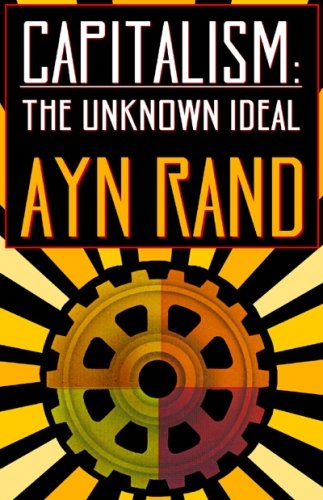 Sa vie bascule durant les années 1945-60, où elle devient une philosophe à la mode, soutenue par quantité de financiers et de littérateurs juifs, cyniques et conquérants. Durant les années 1960, un parent de l’épouse de son amant, Leonard Peikoff, anime le Mouvement objectiviste, à la gloire de la Dame.
Sa vie bascule durant les années 1945-60, où elle devient une philosophe à la mode, soutenue par quantité de financiers et de littérateurs juifs, cyniques et conquérants. Durant les années 1960, un parent de l’épouse de son amant, Leonard Peikoff, anime le Mouvement objectiviste, à la gloire de la Dame.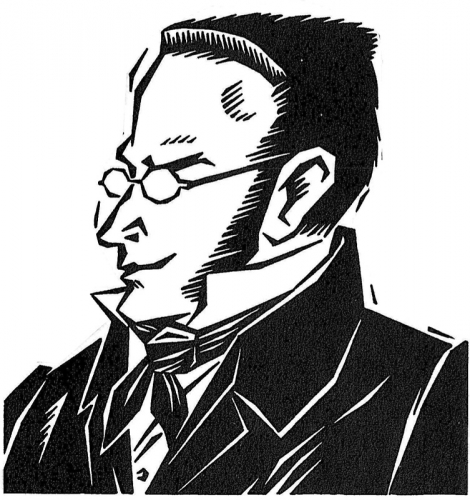
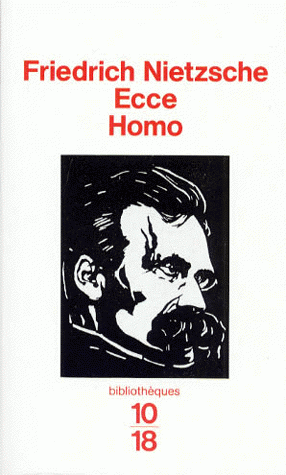 « Je reproche aux miséricordieux de manquer facilement de pudeur, de délicatesse, de ne pas savoir garder les distances. La compassion prend trop vite l’odeur de la populace. Surmonter la pitié, c’est une vertu aristocratique » (Nietzsche, Ecce Homo, de 1888). La compassion est une « valeur amorale » et la charité – le don gratuit, sans espoir de réciprocité – une « morale d’esclaves »… une autre analyse en ferait plutôt une valeur de Seigneur moral ! « Les horreurs de la réalité sont infiniment plus nécessaires que ce petit bonheur qu’on appelle “la bonté” », cette bonté que Friedrich, solitaire, aigri par son insuccès en terres germaniques, assimile à un hédonisme moral (même source). Il fait de la magnanimité une « vengeance sublimée »… alors qu’elle est surtout une forme subtile de mépris.
« Je reproche aux miséricordieux de manquer facilement de pudeur, de délicatesse, de ne pas savoir garder les distances. La compassion prend trop vite l’odeur de la populace. Surmonter la pitié, c’est une vertu aristocratique » (Nietzsche, Ecce Homo, de 1888). La compassion est une « valeur amorale » et la charité – le don gratuit, sans espoir de réciprocité – une « morale d’esclaves »… une autre analyse en ferait plutôt une valeur de Seigneur moral ! « Les horreurs de la réalité sont infiniment plus nécessaires que ce petit bonheur qu’on appelle “la bonté” », cette bonté que Friedrich, solitaire, aigri par son insuccès en terres germaniques, assimile à un hédonisme moral (même source). Il fait de la magnanimité une « vengeance sublimée »… alors qu’elle est surtout une forme subtile de mépris.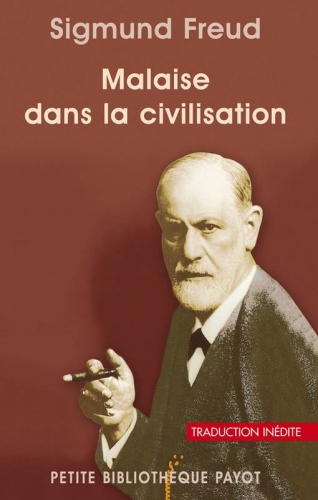 Dans son Malaise dans la civilisation (texte de 1930), le gourou de Vienne, alors en perte de vitesse, étant très contesté par ses concurrents et ses ex-élèves, écrit l’une des perles dont il a le secret : « Tout renoncement à une pulsion devient une source d’énergie pour la conscience », alors qu’elle ne fait généralement qu’alimenter la puissance d’une autre pulsion. Ne pas reprendre du gâteau fut une source d’intime satisfaction pour le stoïcien romain ; ne pas violer une jolie femme restera toujours une source d’honneur pour un homme.
Dans son Malaise dans la civilisation (texte de 1930), le gourou de Vienne, alors en perte de vitesse, étant très contesté par ses concurrents et ses ex-élèves, écrit l’une des perles dont il a le secret : « Tout renoncement à une pulsion devient une source d’énergie pour la conscience », alors qu’elle ne fait généralement qu’alimenter la puissance d’une autre pulsion. Ne pas reprendre du gâteau fut une source d’intime satisfaction pour le stoïcien romain ; ne pas violer une jolie femme restera toujours une source d’honneur pour un homme.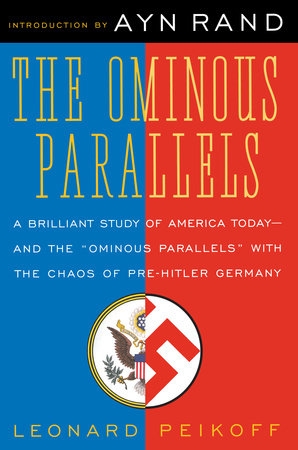 Se réclamant officiellement de « l’objectivité », la dame a fourni à ses lecteurs des analyses très « subjectives » de tout ce qu’elle a traité. Plutôt que les rhapsodies très lyriques de la romancière-philosophe, c’est le pavé de Leonard Peikoff (1991) qui explique le mieux les concepts assez rudimentaires de la dame, qui a tenté d’amalgamer le cynisme de « Stirner » et le délire mégalomaniaque du Nietzsche de ses dernières années d’éveil cérébral aux théories sommaires des économistes ultralibéraux des XVIIIe et XIXe siècles.
Se réclamant officiellement de « l’objectivité », la dame a fourni à ses lecteurs des analyses très « subjectives » de tout ce qu’elle a traité. Plutôt que les rhapsodies très lyriques de la romancière-philosophe, c’est le pavé de Leonard Peikoff (1991) qui explique le mieux les concepts assez rudimentaires de la dame, qui a tenté d’amalgamer le cynisme de « Stirner » et le délire mégalomaniaque du Nietzsche de ses dernières années d’éveil cérébral aux théories sommaires des économistes ultralibéraux des XVIIIe et XIXe siècles.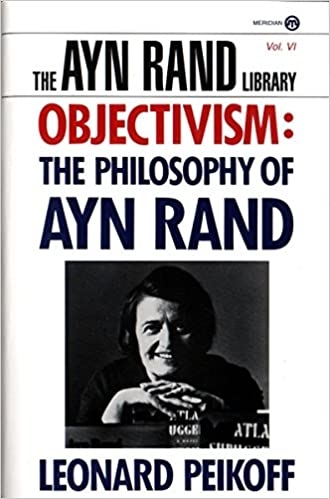 Chaque être humain est libre de butiner là où il trouve son bien, libre également de crier Au génie !, libre de vouloir faire partager son admiration. Toutefois, nier toute valeur à la compassion et repousser l’altruisme et la pitié, au profit de l’individualisme forcené ou d’un darwinisme social quelque peu absurde, ce sont de curieuses attitudes, peu enthousiasmantes.
Chaque être humain est libre de butiner là où il trouve son bien, libre également de crier Au génie !, libre de vouloir faire partager son admiration. Toutefois, nier toute valeur à la compassion et repousser l’altruisme et la pitié, au profit de l’individualisme forcené ou d’un darwinisme social quelque peu absurde, ce sont de curieuses attitudes, peu enthousiasmantes.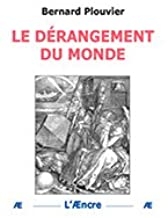 B. Plouvier : Le dérangement du monde ou des erreurs et des hommes, L’Æncre, 2016
B. Plouvier : Le dérangement du monde ou des erreurs et des hommes, L’Æncre, 2016


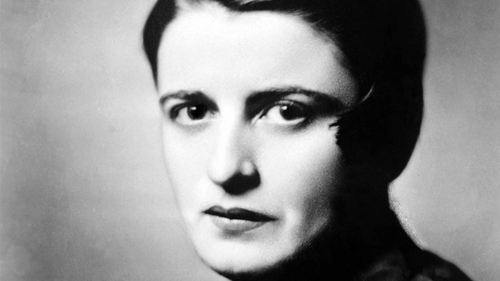

 del.icio.us
del.icio.us
 Digg
Digg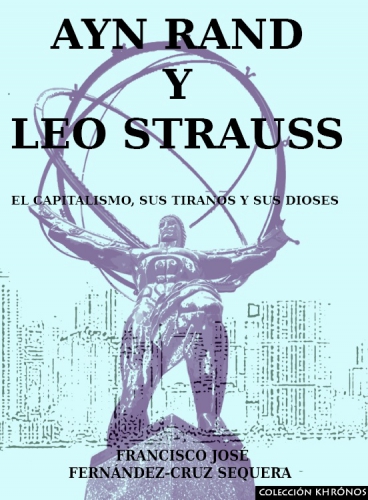
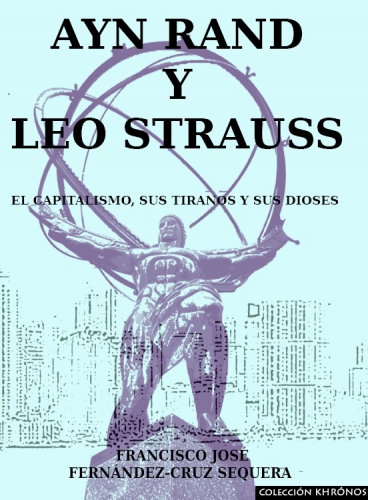
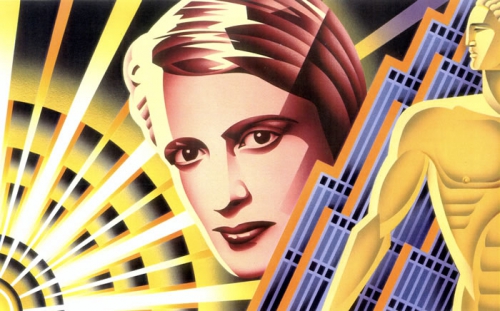
 Ortega clearly appreciates the value of modern technology and admires the skills of those who develop and apply it. But he does not think that technocrats constitute a true elite. In fact, he tends to regard them merely as mass men with high IQs—clever barbarians, indispensable barbarians, but barbarians nonetheless. Ortega also thought that the progress of industrialism and technology would bring about the worst form of mass society: a global and homogeneous mass society.
Ortega clearly appreciates the value of modern technology and admires the skills of those who develop and apply it. But he does not think that technocrats constitute a true elite. In fact, he tends to regard them merely as mass men with high IQs—clever barbarians, indispensable barbarians, but barbarians nonetheless. Ortega also thought that the progress of industrialism and technology would bring about the worst form of mass society: a global and homogeneous mass society. Ayn Rand’s philosophical journal for May 16, 1934, begins with a passage by the American journalist Alexander Wolcott contrasting the cultural atmosphere of the Soviet Union with the West. It closes with a passage copied out from the last chapter of The Revolt of the Masses. Between them, Rand wrote two remarkable paragraphs:
Ayn Rand’s philosophical journal for May 16, 1934, begins with a passage by the American journalist Alexander Wolcott contrasting the cultural atmosphere of the Soviet Union with the West. It closes with a passage copied out from the last chapter of The Revolt of the Masses. Between them, Rand wrote two remarkable paragraphs: